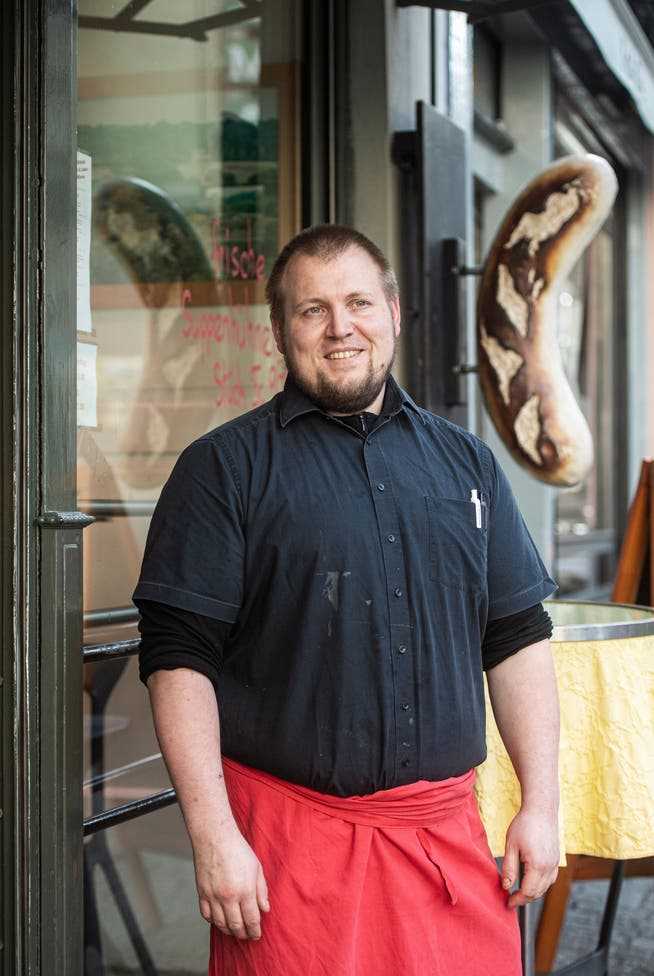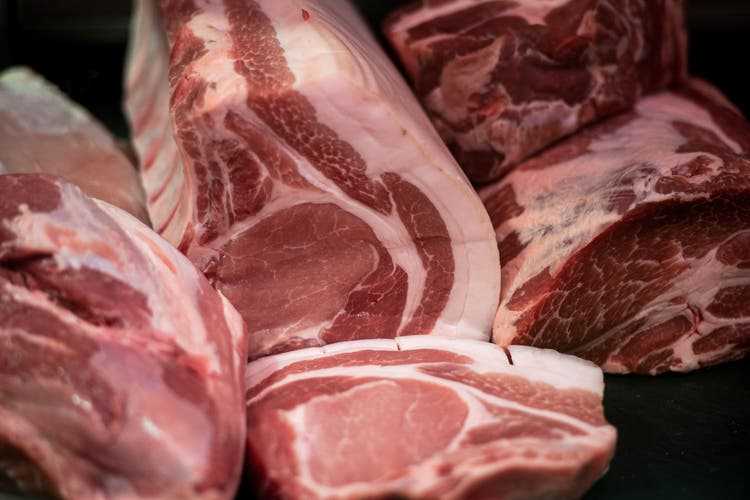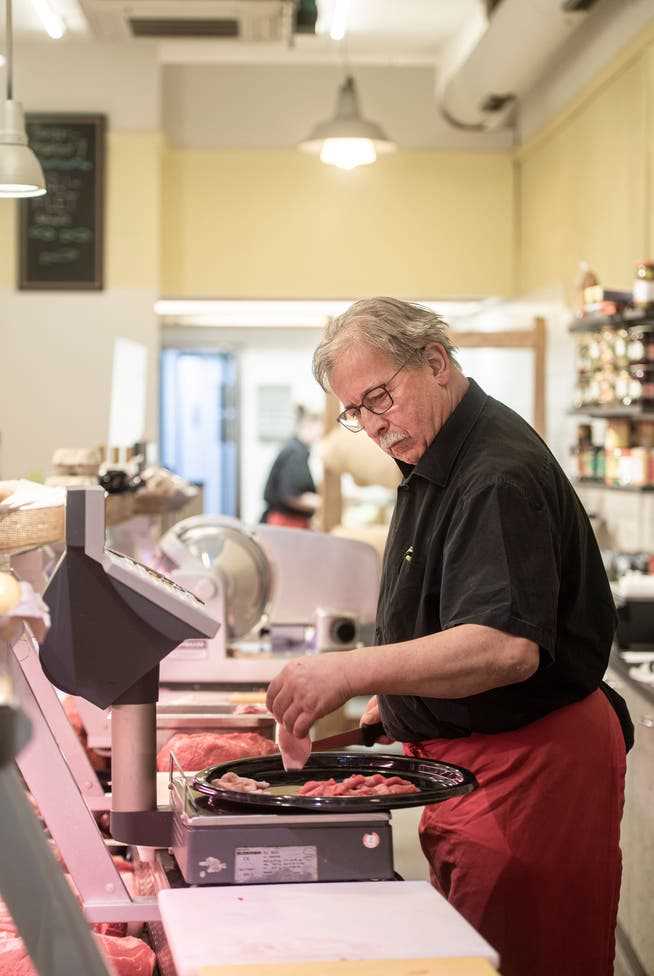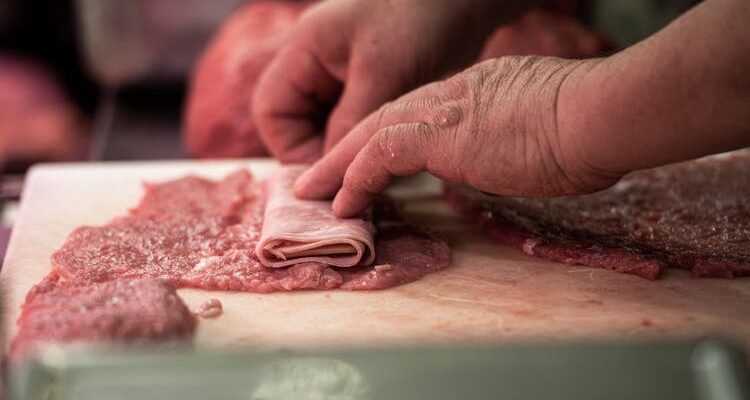What does the future of Zurich’s butcher shops look like?
“The butchers are dying out”: manual work in the Zgraggen butcher’s shop.
A gigot of lamb weighing four kilograms, a beef tongue, a Christmas goose or a kilogram of fresh minced meat for the meatloaf, mixed with a handful of meat. You can buy that from the butcher Zgraggen at the Stüssihof in Zurich.
The Zgraggen butcher’s shop is one of those places of which there are fewer and fewer in downtown Zurich: a small, family-run specialist shop where the banker next door shops as well as the construction worker, where lawyers, pensioners and day-trippers come together in the Stand in line.
Here, young customers occasionally get to hear from the older ones: “It’s nice that nice guys like you are chaufing a real piece of meat!” In the case of special requests, the question was asked with care: «Do you like that at all?» The Metzgerei is a place where every lunch menu comes with a good helping of brown gravy. Because: At Zgraggen there are no half measures.
But now the last sausages («Homemade!» assures the patron Fabio Zgraggen) and the last schnitzel («Breaded yourself!») are over the counter.
12 hour work, 6 days a week – at least
The traditional butcher’s shop Bär on Rennweg closed last December. Zgraggen seemed like he could hold his own. With a lavish lunch menu ranging from schnitzel bread to bratwurst, he also attracted customers beyond die-hard meat fans to the store. While the butcher’s counter sometimes seems deserted, long queues form at the food buffet at lunchtime. Since there is no longer a fish or cheese shop nearby, Zgraggen also sells these products.
And now this: the last butcher in the Niederdorf is retiring after more than forty years. Monday is Zgraggen’s last day at the Stüssihof. That’s how it was read in the “Altstadt-Kurier” last week. An era is coming to an end, writes the self-proclaimed “Weltblatt für den Kreis 1”, and regular customers see it the same way.
Why only, Mr. Zgraggen?
“It was all a bit much,” says Fabio Zgraggen. The store, the lunch menus, the entire production, then the catering and deliveries to restaurants. He and his ten employees managed all of this day after day, from Monday to Saturday, from five in the morning to seven in the evening. And on Sunday: office work, bookkeeping, writing offers and invoices.

“After all, it’s my life,” says Fabio Zgraggen about his decision to give up the butcher’s shop.
Fabio Zgraggen is 36 years old and took over the shop from his father Othmar eight years ago. He has managed the business ever since, but his parents continued to help. The father, Othmar Zgraggen, could often be seen in the shop, while the mother, Claire, took care of organizational matters. But now the parents are long past retirement age, and it has become too much for them too, says Fabio Zgraggen.
Not enough skilled workers in the industry
That’s why the junior decided to stop and reorient himself in his home canton of Uri. The family runs a campsite with a self-service shop there, where Zgraggen wants to work in the future. But doesn’t he get bored? Doesn’t he miss the butcher’s shop? “Oh,” he says. He can also make sausages there, and also dry meat. He loves his craft, it would never have failed him because of that.
What failed is the fact that well-trained butchers are becoming increasingly rare. Fabio Zgraggen looked around for a partner but couldn’t find one. And he didn’t want to do it alone. He says: «Butchers are dying out. Standing in the shop from morning to night – nobody wants to do that anymore.”
Of course, the regular customers were surprised and disappointed by the news that “their” Zgraggen was quitting. “But you have to understand that too. After all, it’s my life.”
There is at least one consolation for the residents of “Dörfli”: a butcher’s shop will once again take the place of Zgraggen. A company from near Frauenfeld will open its third branch at Stüssihofstatt 10. There will no longer be a butcher’s shop in the old town, but high-quality meat will still be available.
“It was important to us that a butcher’s shop should move in here again. I think we’ve found a good solution,” says Fabio Zgraggen. The new operators will first refurbish the restaurant and then celebrate the opening on April 1st. Zgraggen’s staff will be taken over, which makes him particularly happy.
Fewer butcher shops, but larger ones
Ruedi Hadorn, Director of the Swiss Meat Association (SFF), also observes that small individual butchers have become rarer in recent years. Over 900 butcher shops are organized in the SFF – and the trend is falling. A decline can clearly be observed, says Hadorn, but only as far as the number of companies is concerned. At around 24,000 people, the number of people employed in the meat processing sector remains stable.

The meat will remain, but the Zgraggen family will withdraw from Niederdorf.
What is happening in Zurich’s Niederdorf is similar everywhere in the country: the trend is towards businesses with more than one branch. So are small and family businesses like the Zgraggen butcher’s shop a thing of the past? “No way,” says Hadorn, “two-thirds of all our members in our association are SMEs with fewer than ten employees.”
And yet, like Fabio Zgraggen, Ruedi Hadorn cares about the offspring of his guild. The reputation of the meat industry is unjustifiably bad, and too few young people choose such a career, says Hadorn. “If this development continues, we will be short of 40 to 50 percent of the specialists we actually need in the long term.” So bleak prospects.
The Aesthetics of the Flesh
How butcher shops can face this uncertain future can be seen, for example, a ten-minute walk from the Zgraggen butcher shop. There, the Graubünden native Ludwig Hatecke runs a completely different kind of business. Here the pieces of meat lie like sculptures in a chrome steel display, the minced meat stands there in small towers, the walls are white and bare, the wrapping paper is in elegant black.
It looks more like an art gallery than a butcher’s shop, even if the owner Hatecke doesn’t like the comparison. “It’s not about depicting meat as art, it’s about presenting our craft differently.” Unlike the cheap retailers, the toughest competition from butchers. With elaborate design and artistic staging, Hatecke wants to show its customers that this is not a mass-produced item. It’s worth going to a specialty store for that.

Othmar Zgraggen, Fabio’s father, often stepped in when there was a shortage of people in the butcher’s shop.
“Other quality butchers also have good meat. What distinguishes us from them is the presentation and the premises. For us, meat is something aesthetic.»
Hatecke runs a business with fifty employees and five branches. Five years ago he expanded to Zurich. This fits with the industry trend towards slightly larger shops, even if Hatecke’s butcher’s shop remains a family business. His local shop is part butcher, part bistro. Business is good, he says. Just this lunchtime they had to turn down seven reservations because all the tables were occupied.
“That’s right, isn’t it?” he calls out to an employee. “Yes sir!” he replies as if fired from a gun. Hatecke nods contentedly.
Look like a luxury store, but don’t be one
Is his business doing well simply because he focuses on the luxury segment? No, says Hatecke. “We want people to be able to buy a few Wienerli and be treated the same as everyone else.” Hatecke doesn’t want to be a luxury shop – it just wants to look a bit like it.
However, there are also limits to openness: customers walking out of the store with a warm sausage in their hands – that’s just not possible. Looking like a take-away clashes with the aesthetic concept. This aesthetic, the sale of meat as an event: that makes it easier for him to find staff, says Hatecke. It wasn’t easy for him either. “But if you manage to inspire people with your concept, then you keep them.” The employees are the most important thing for him, they have to like it here.
“That’s why our walls are white and empty: so you can see the butcher clearly. Because he’s the most important person here.”
As a farewell, Hatecke serves four slices of Bündnerfleisch, perfectly rolled up next to each other on a large white plate. They are eaten in no time and taste just like they look.
